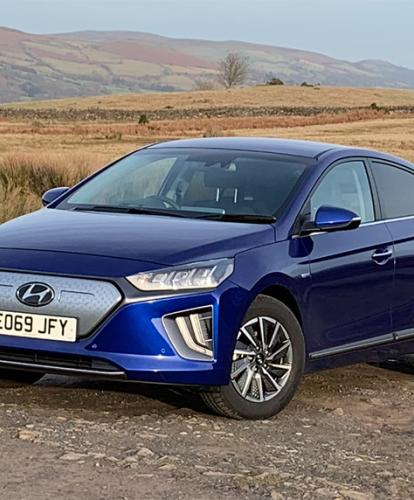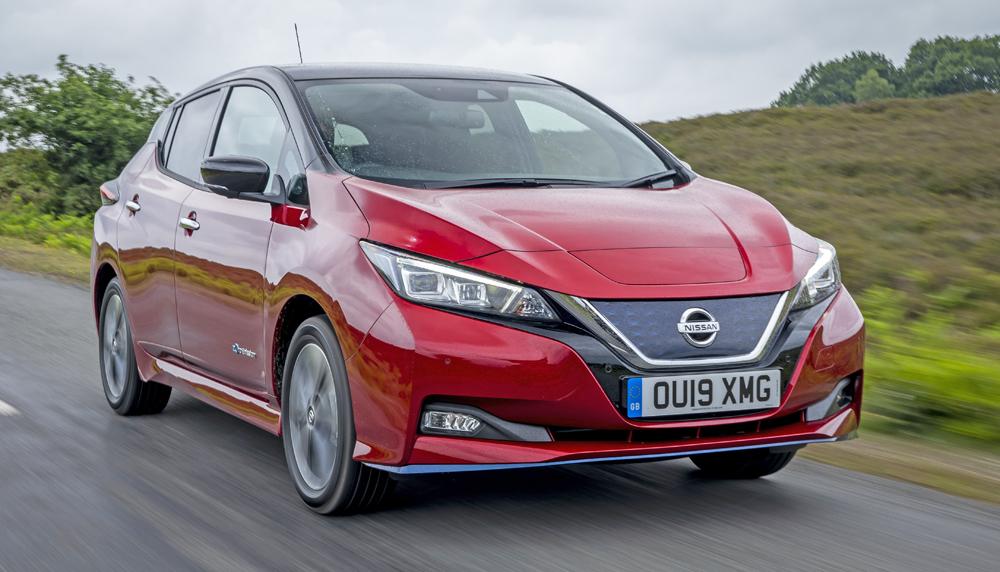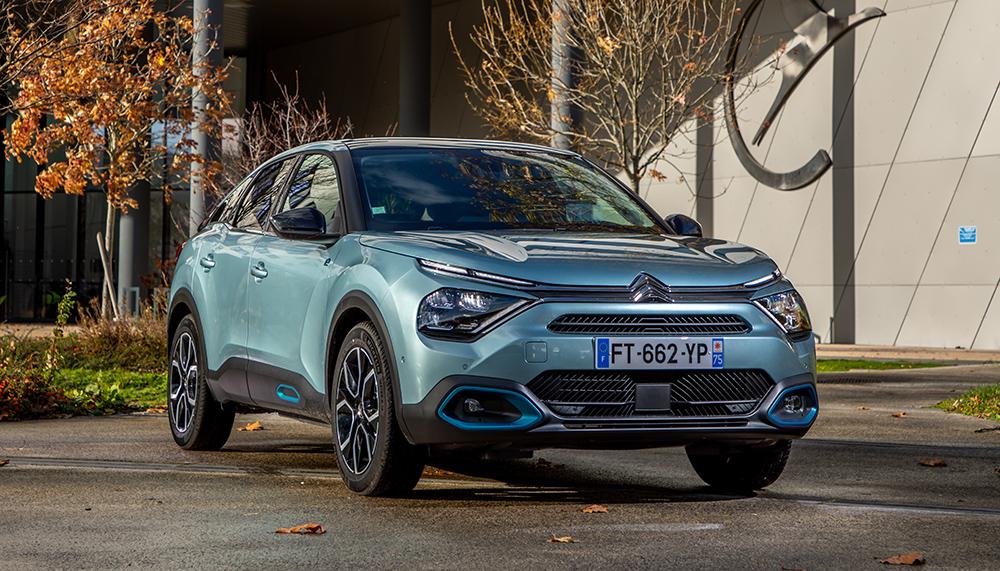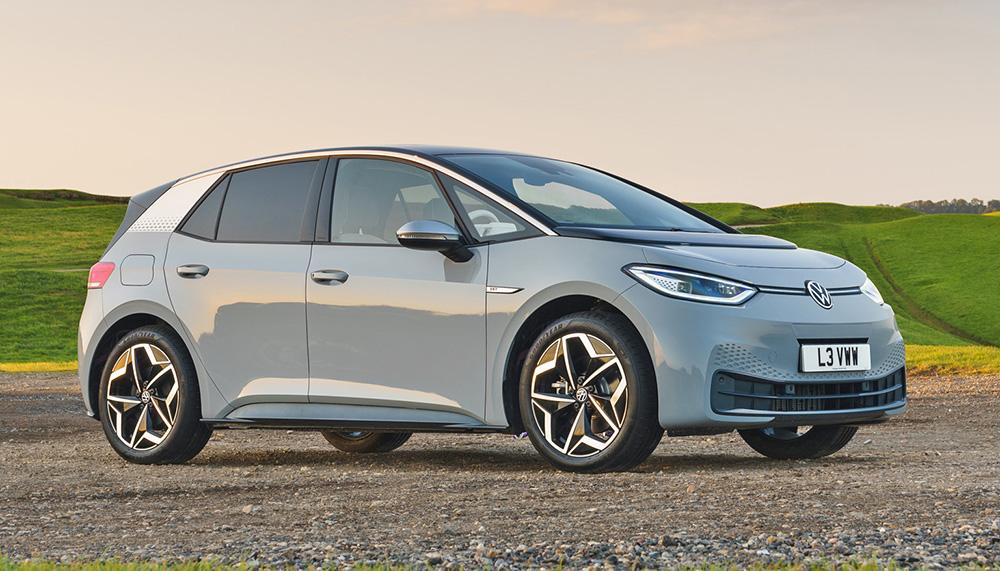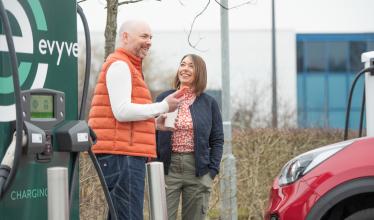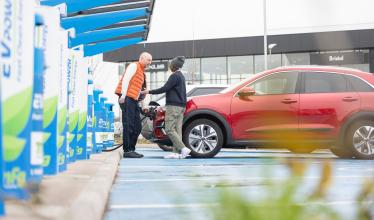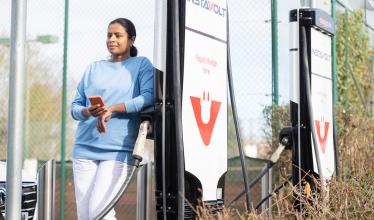Zapmap verdict: “If you want an electric car, there are few more efficient than the Hyundai Ioniq Electric.”

- ● OTR: £30,950
- ● Category: Hatchback
- ● Tax: £0 VED – 0% BIK
- ● Cost to charge: £6.10
- ● Emissions: 0 g/km CO2
- ● Cost per mile of range: £160
Hyundai Ioniq Electric: Range & charging

Is the Hyundai Ioniq fully electric? Well, yes – Hyundai’s Ioniq family kicked off the manufacturer’s electrified vehicle push, with the badge available on a conventional hybrid, plug-in hybrid and pure-electric model. This choice of powertrain means that drivers can easily pick electric without compromise, and may well tempt buyers in who were initially looking at a car with an engine as well.
There is one configuration available:
-
- ● Hyundai Ioniq Electric – 100 kW – 38.3 kWh – 193 miles
Range
Hyundai’s official WLTP driving range for the Ioniq Electric is 193 miles on a charge. Considering there are a raft of EVs available from rival brands that get around 200 miles out of a 50 kWh battery, it’s clear that efficiency is very much the name of the game here.
In real-world driving, that range was effectively down to 150 miles, when driving in winter conditions and without thought for frugal use of the throttle. It also didn’t cover a lot of town work, and I’m confident that an early drive of the Ioniq Electric in warmer conditions, with a more balanced mix of town, country and motorway routes will see the Ioniq Electric regularly achieve 180 miles on a charge – again without a gentle right foot.
Braking
Hyundai’s brake energy recuperation system is one of the best on the market. It’s a variable set-up that can be controlled using paddles on the steering wheel, allowing for coasting through to strong brake energy recuperation. There’s also an ‘extra’ setting that uses a smart regen system to bring the car to a complete stop when required by holding the left-hand paddle. As such, it’s a real strength of the Ioniq Electric that drivers can cover distances very efficiently.
Charging
Perhaps the Ioniq Electric’s weakest point isn’t particularly weak at all. Charging can be carried out at 7.2 kW on AC charge points, which is fairly normal, but the Ioniq Electric will take almost an hour for an 80% charge on 50 kW DC units. It’s around twice as long as most rivals. Then again, few drivers will regularly cover more than 200 miles on a trip. All charging is covered via the CCS inlet on the rear near-side flank.
The Hyundai Ioniq Electric on the road

Performance is covered with the 100 kW electric motor fitted under the bonnet, though said performance isn’t too rapid. Instead, it’s ‘quick enough’ with a 0-62mph time of almost 10 seconds, though at least it feels faster in short bursts of acceleration at low speeds.
What’s the Hyundai Ioniq Electric like to drive?
Comfortable in town or on the motorway, the Ioniq Electric is a relaxing cruiser at heart. The suspension is supple rather than stiff, and although body roll is kept in check, it’s almost eliminated thanks to this focus on comfort.
Unusually for a non-premium EV, the Ioniq Electric excels on the motorway, when the suspension can level out all road imperfections, though it’s also adept at town driving thanks to its responsive electric motor. It’s least comfortable on twisty county roads, but unless you are tearing along at pace, it will keep up with demands even here.
Hyundai Ioniq Electric: Comfort & Practicality

This facelift version of the Ioniq Electric is noticeable largely because of a significant change in direction for the front end. Gone is the nearly entirely smooth nose. Instead it’s replaced with a silver panel that includes active air flaps to improve cooling or aerodynamics, depending on what’s required.
Design and functionality
With a dedication to efficiency, the Ioniq Electric gets a ‘fastback’ shape, rather than a traditional hatchback design. Sitting somewhere between a saloon and hatch in shape, this makes it slippery through the air, but has an effect on interior practicality.
Although a family of four will fit comfortably, tall occupants had best avoid the rear seats, and the boot – although a good size – is a strange shape. Stretching back rather than up, it’s more saloon in concept than hatchback, though at least owners get full hatchback access.
Hyundai Ioniq Electric: Tech & Specifications

The two trim levels offered keep things simple, with Premium and Premium SE available to pick from. Entry level Premium has all you need and more, though the top spec Premium SE gets the full bells and whistles treatment. Fitted as standard to all models are:
- 10.25-inch touchscreen navigation system with BlueLink and Apple CarPlay/Android Auto
- Climate control
- 16-inch alloys
- Rear parking sensors & parking camera
- Keyless entry and start
- Variable brake energy recuperation
- LED headlights
- Wireless phone charger
Is the Hyundai Ioniq Electric a good car?
The Hyundai Ioniq Electric’s biggest weakness is that it can’t rapid charge as quickly as the competition. However, if that’s only going to be an occasional inconvenience, then the Hyundai makes a lot of sense. A smaller battery than rivals means that this is mitigated anyway. Combine that with excellent efficiency for a competitive range, a practical family hatchback interior, and high levels of kit, and the Ioniq Electric will suit many buyers well.
And how much is the road tax on a Hyundai Ioniq Electric? Use our Car Tax Calculator to find out.
The Hyundai Ioniq Electric’s rivals
All information above correct at time of publication. Official economy figures, pricing, and tax rates supplied by the manufacturer. Cost to charge based on 0-100% charge at home on a tariff of 16 p/kWh.
